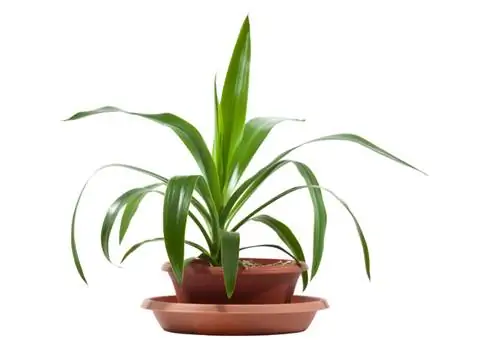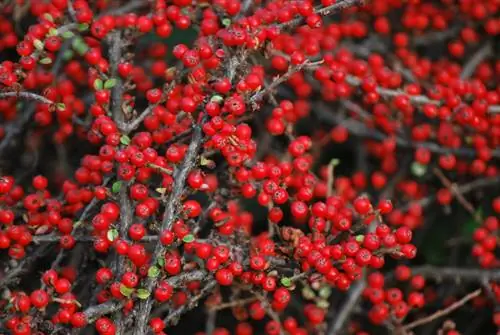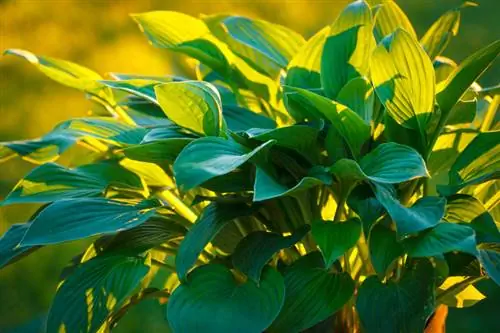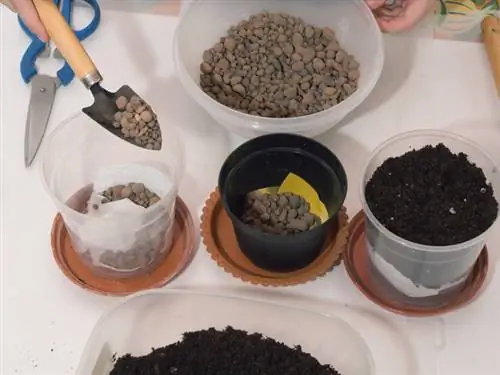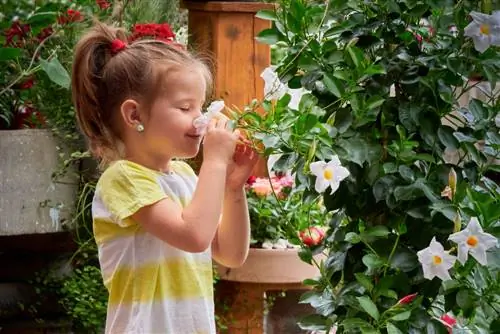- Author admin [email protected].
- Public 2023-12-16 16:46.
- Last modified 2025-06-01 06:02.
The Yucca - the word "palm" is actually incorrect, as this plant is not a type of palm - or palm lily is a very strong and fast-growing plant. With good care and sufficient light, the popular houseplant can grow up to five meters high even when grown in pots - so it's no wonder that it needs to be repotted from time to time. You can find out how best to do this in this article.
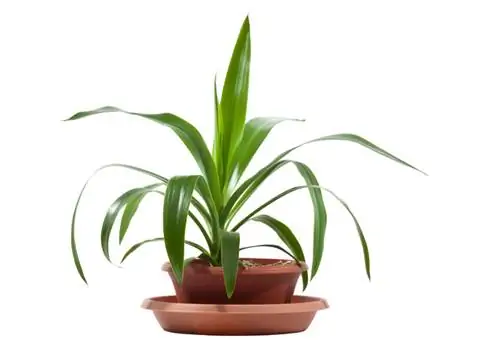
How do I properly repot a yucca palm?
To repot a yucca palm, carefully remove it from the old pot, remove the old substrate, place the plant in a new pot with fresh, loose substrate, press the substrate well and water the yucca palm afterwards. Place it in a bright, sheltered place.
When and how often the yucca palm should be repotted
Basically, the yucca should be repotted about every two to three years, although it does not always need a new pot. Very large specimens can also be cut back and then placed back in their old pot with fresh substrate - provided, of course, that the size is still sufficient. Always choose the pot so that it is not only wide but also high - the yucca needs a planter that offers stability, otherwise it risks tipping over quickly once it reaches a certain height. Otherwise, choose spring for this measure, when the yucca wakes up from its hibernation and begins to sprout again.
How to know when the yucca needs to be repotted
It is high time to repot the yucca when one or more of the following criteria apply:
- The roots are already growing out of the pot (e.g. from the planting holes).
- The existing substrate has already shrunk significantly or has been displaced by the roots.
- If the substrate is already so solid that irrigation water cannot seep through straight away.
- The Yucca is already very unstable and can no longer stand freely.
- The pot for the plant looks way too small on the outside.
- The plant gets yellow leaves (usually from below).
Yucca palm feels particularly comfortable in loose substrate
Yucca palms are desert plants and cannot tolerate excessive moisture or waterlogging. The roots are quite sensitive: they should not be trimmed or otherwise damaged during repotting. The plant also doesn't like it when the sensitive roots are simply bent. You can usually recognize root damage when the plant suddenly drops its leaves after repotting. Drooping leaves can also be due to excess moisture, so ensure a loose, well-drained substrate and good drainage. For example, a mixture of standard soil (€35.00 on Amazon) / potted plant soil, some sand and perlite or expanded clay has proven to be effective.
How to repot your yucca palm - a step-by-step guide
And this is how you can repot your yucca:
- Get the plant out of the old plant pot.
- If it is very tight, run a sharp knife along the edge of the pot
- and then knock on the pot. This causes the earth to loosen.
- Remove the old substrate and check the roots.
- Only rotten and severely damaged roots should be removed.
- The yucca usually doesn't like basic root pruning.
- Now place the plant in a new pot with fresh substrate.
- Tap all around the pot so that the soil is well distributed
- and no air holes remain.
- Press the substrate well
- and water the yucca.
- Place the plant in as bright and protected a place as possible.
- The yucca feels most comfortable directly in front of a south-facing window or outdoors.
Tip
Be sure to wear gloves when repotting, the leaves of the plant are very sharp.

